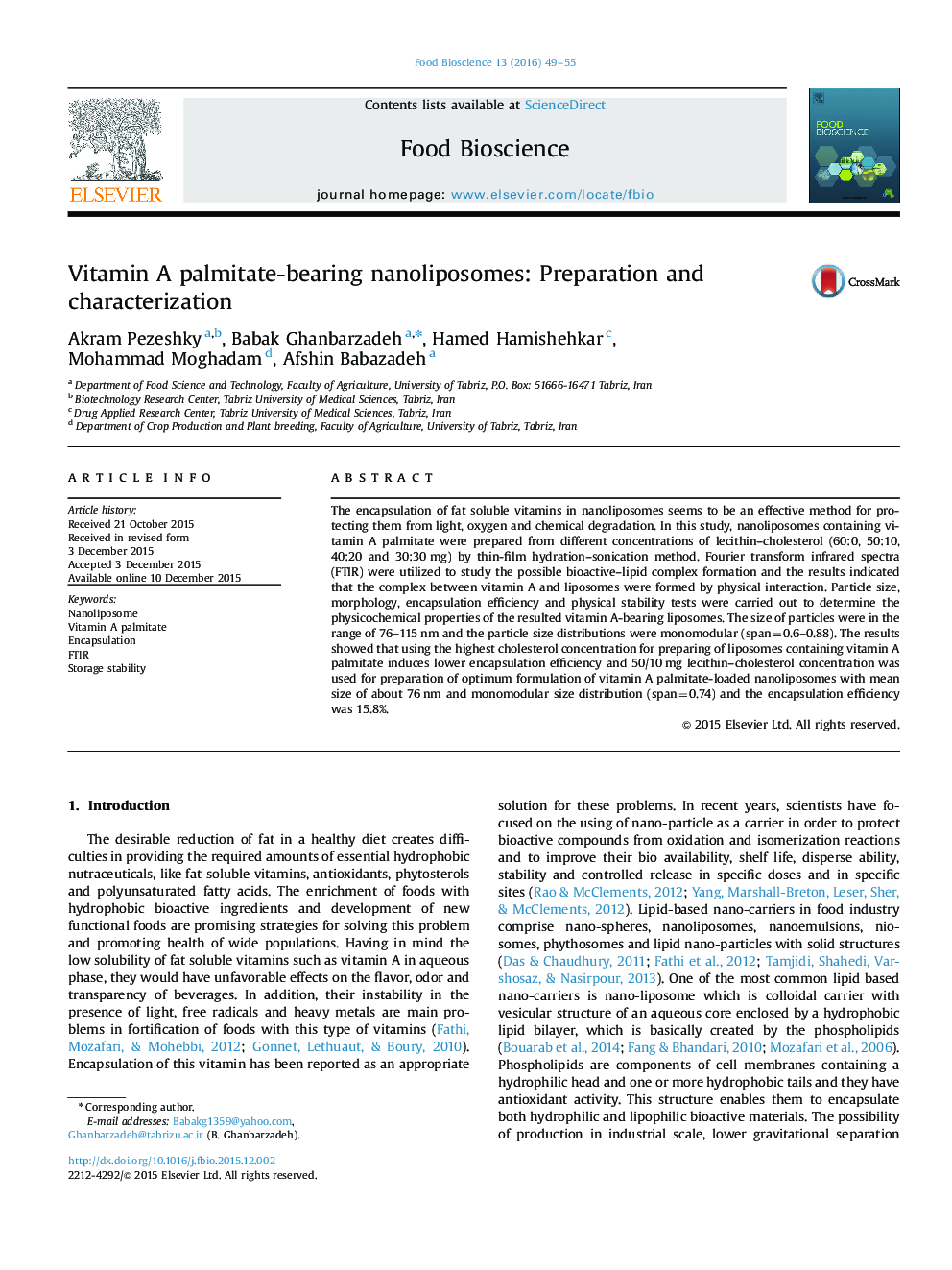| کد مقاله | کد نشریه | سال انتشار | مقاله انگلیسی | نسخه تمام متن |
|---|---|---|---|---|
| 19666 | 43116 | 2016 | 7 صفحه PDF | دانلود رایگان |
The encapsulation of fat soluble vitamins in nanoliposomes seems to be an effective method for protecting them from light, oxygen and chemical degradation. In this study, nanoliposomes containing vitamin A palmitate were prepared from different concentrations of lecithin–cholesterol (60:0, 50:10, 40:20 and 30:30 mg) by thin-film hydration–sonication method. Fourier transform infrared spectra (FTIR) were utilized to study the possible bioactive–lipid complex formation and the results indicated that the complex between vitamin A and liposomes were formed by physical interaction. Particle size, morphology, encapsulation efficiency and physical stability tests were carried out to determine the physicochemical properties of the resulted vitamin A-bearing liposomes. The size of particles were in the range of 76–115 nm and the particle size distributions were monomodular (span=0.6–0.88). The results showed that using the highest cholesterol concentration for preparing of liposomes containing vitamin A palmitate induces lower encapsulation efficiency and 50/10 mg lecithin–cholesterol concentration was used for preparation of optimum formulation of vitamin A palmitate-loaded nanoliposomes with mean size of about 76 nm and monomodular size distribution (span=0.74) and the encapsulation efficiency was 15.8%.
Journal: Food Bioscience - Volume 13, 1 March 2016, Pages 49–55
